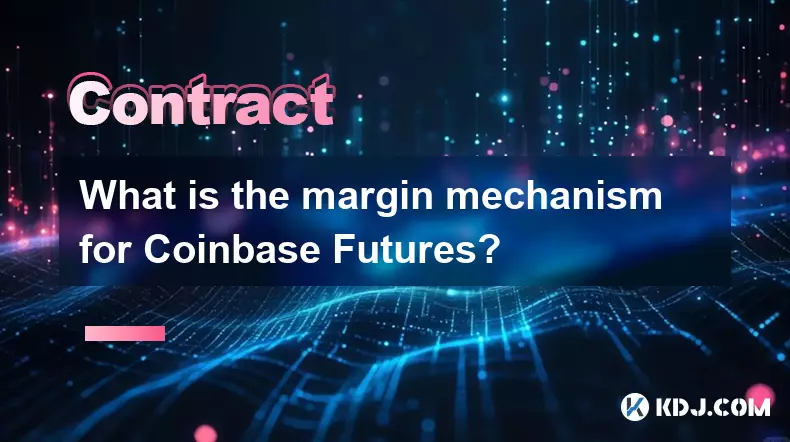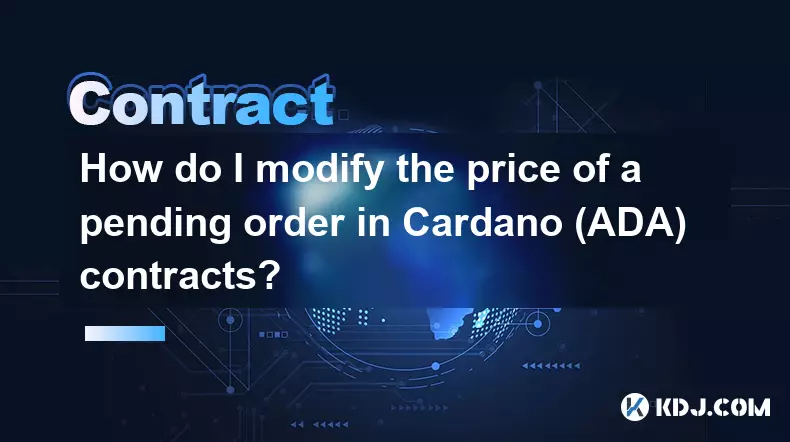-
 bitcoin
bitcoin $109523.663807 USD
-0.13% -
 ethereum
ethereum $4019.526508 USD
2.06% -
 tether
tether $1.000482 USD
0.00% -
 xrp
xrp $2.776815 USD
0.18% -
 bnb
bnb $958.942396 USD
0.12% -
 solana
solana $204.294698 USD
3.84% -
 usd-coin
usd-coin $0.999693 USD
0.00% -
 dogecoin
dogecoin $0.232115 USD
2.09% -
 tron
tron $0.338028 USD
0.84% -
 cardano
cardano $0.790920 USD
1.50% -
 hyperliquid
hyperliquid $44.871443 USD
5.60% -
 ethena-usde
ethena-usde $1.000322 USD
0.04% -
 chainlink
chainlink $21.034165 USD
2.60% -
 avalanche
avalanche $28.794831 USD
-0.54% -
 stellar
stellar $0.360466 USD
1.24%
What is the margin mechanism for Coinbase Futures?
Coinbase Futures uses isolated and cross margin modes to manage leverage, requiring initial and maintenance margins to open and maintain positions, with liquidation triggered if equity falls below thresholds.
Sep 19, 2025 at 03:00 am

Understanding Coinbase Futures Margin Mechanism
1. The margin mechanism on Coinbase Futures allows traders to open leveraged positions by posting a fraction of the total trade value as collateral. This system enables increased market exposure without requiring full capital outlay. Traders can access leverage up to specified limits depending on the contract and market conditions.
2. Initial margin is required to open a futures position. This amount acts as a security deposit and varies based on the leverage level selected. Higher leverage reduces the initial margin requirement but increases liquidation risk. Coinbase sets minimum thresholds to ensure market stability and participant accountability.
3. Maintenance margin represents the minimum equity that must be maintained in a trading account to keep a position open. If the account balance falls below this level due to adverse price movements, a margin call is triggered. Traders must deposit additional funds or face automatic position liquidation.
4. Liquidation occurs when a trader’s equity drops below the maintenance margin threshold and no further funds are added. Coinbase Futures employs an automated engine to close losing positions efficiently, preventing negative balances and protecting both traders and the platform from excessive risk.
5. Unrealized PnL impacts margin balance in real time. As prices fluctuate, the value of open positions changes, affecting available margin. This dynamic calculation ensures transparency and helps traders monitor their risk exposure continuously throughout the trading session.
Types of Margin Accounts on Coinbase Futures
1. Isolated margin mode assigns a specific amount of collateral to a single position. This limits potential losses to the allocated margin, offering greater control over risk. Losses cannot exceed the isolated margin amount, making it suitable for conservative strategies.
2. Cross margin mode uses the entire account balance to support all open positions. This increases capital efficiency and reduces the likelihood of liquidation since equity from profitable trades supports losing ones. However, total account equity is at risk if multiple positions move unfavorably.
3. Each margin type caters to different trading styles. Isolated margin benefits those managing multiple trades independently, while cross margin suits diversified portfolios where gains in one area offset losses in another.
4. Users can switch between modes depending on their strategy, though certain restrictions may apply during volatile periods or when positions are active. Proper understanding of each mode is essential before initiating leveraged trades.
5. Margin mode selection directly affects liquidation price calculations. In isolated mode, liquidation depends solely on the assigned collateral and position size. In cross mode, overall account health influences when and how positions are closed.
Risk Management and Margin Adjustments
1. Coinbase Futures implements dynamic margin adjustments based on market volatility and liquidity conditions. During periods of high volatility, margin requirements may increase to mitigate systemic risk and prevent cascading liquidations across the platform.
2. Funding rates play a role in maintaining equilibrium between long and short positions. These periodic payments exchange between counterparties and influence effective holding costs, indirectly impacting margin usage over time.
3. The insurance fund serves as a backstop against auto-deleveraging events. When liquidations fail to execute at fair prices, the fund covers residual losses, ensuring orderly market operations and protecting solvent traders from unexpected liabilities.
4. Real-time monitoring tools provide alerts for margin ratio changes, helping users respond proactively to shifting conditions. Notifications for approaching liquidation levels allow timely decisions such as adding margin or closing positions manually.
5. Margin health indicators are displayed prominently on the trading interface. These include current margin ratio, estimated liquidation price, and available balance for new positions, enabling informed decision-making under varying market dynamics.
Frequently Asked Questions
What happens when my position gets liquidated on Coinbase Futures?Upon liquidation, your position is automatically closed by the system at the best available market price. Any remaining collateral after settling the debt is returned to your account. The insurance fund covers extreme shortfalls, preventing negative balances.
Can I add more margin to avoid liquidation?Yes, you can increase your margin balance manually before liquidation occurs. Depositing additional funds raises your margin ratio and pushes the liquidation price further from the current market rate, giving your position more room to withstand adverse moves.
How is the initial margin calculated for a futures contract?Initial margin is determined by the contract size, leverage level, and prevailing market volatility. Coinbase applies a percentage-based formula that adjusts according to risk parameters set by the platform, ensuring sufficient coverage for potential price swings.
Does Coinbase Futures charge interest on borrowed margin?No, Coinbase Futures does not charge interest on margin. Instead, traders pay funding fees periodically based on the difference between perpetual contract prices and the underlying index. These fees are exchanged directly between longs and shorts.
Disclaimer:info@kdj.com
The information provided is not trading advice. kdj.com does not assume any responsibility for any investments made based on the information provided in this article. Cryptocurrencies are highly volatile and it is highly recommended that you invest with caution after thorough research!
If you believe that the content used on this website infringes your copyright, please contact us immediately (info@kdj.com) and we will delete it promptly.
- Coin War, Durian Auction, Night Tour: A Wild Ride Through Crypto, Cuisine, and Korean TV
- 2025-09-27 08:45:14
- Cyber Hornet, ETFs, and Crypto: A New York Minute on Hybrid Investments
- 2025-09-27 08:25:12
- Bitcoin's Future Value: Prediction, Trends, and Insights
- 2025-09-27 08:45:14
- MoonBull: The Meme Market's 100x Crypto Contender?
- 2025-09-27 08:25:12
- Eric Trump, Crypto Market, and the Unbelievable Q4: A New York Take
- 2025-09-27 08:30:01
- Linea Crypto & SWIFT: What's the Price Prediction?
- 2025-09-27 08:50:01
Related knowledge

How do I enable the "scalping-only" mode for Cardano (ADA) contracts?
Sep 24,2025 at 03:19am
Understanding Scalping Strategies in Crypto Derivatives1. Scalping in cryptocurrency trading refers to executing multiple short-term trades within min...

What is the maximum position limit for Cardano (ADA) contracts?
Sep 23,2025 at 11:00pm
Understanding ADA Futures and Derivatives Market Structure1. Cardano (ADA) futures contracts are offered by several major cryptocurrency derivatives e...

What is the maker fee for Cardano (ADA) contracts?
Sep 26,2025 at 09:01am
Understanding Maker Fees in Cardano (ADA) Contracts1. The concept of maker fees applies broadly across decentralized exchanges and smart contract plat...

How can I view open interest in Cardano (ADA) contracts?
Sep 24,2025 at 07:36am
Understanding Open Interest in Cardano Derivatives1. Open interest refers to the total number of outstanding derivative contracts, such as futures or ...

How do I modify the price of a pending order in Cardano (ADA) contracts?
Sep 27,2025 at 01:00am
Understanding Pending Orders in Cardano Smart Contracts1. Cardano operates on a proof-of-stake blockchain that supports smart contracts through its Pl...

What is the function of the insurance fund in Cardano (ADA) contracts?
Sep 24,2025 at 02:18am
Understanding the Role of Insurance Funds in Cardano Smart Contracts1. The insurance fund within Cardano's ecosystem is not a native feature directly ...

How do I enable the "scalping-only" mode for Cardano (ADA) contracts?
Sep 24,2025 at 03:19am
Understanding Scalping Strategies in Crypto Derivatives1. Scalping in cryptocurrency trading refers to executing multiple short-term trades within min...

What is the maximum position limit for Cardano (ADA) contracts?
Sep 23,2025 at 11:00pm
Understanding ADA Futures and Derivatives Market Structure1. Cardano (ADA) futures contracts are offered by several major cryptocurrency derivatives e...

What is the maker fee for Cardano (ADA) contracts?
Sep 26,2025 at 09:01am
Understanding Maker Fees in Cardano (ADA) Contracts1. The concept of maker fees applies broadly across decentralized exchanges and smart contract plat...

How can I view open interest in Cardano (ADA) contracts?
Sep 24,2025 at 07:36am
Understanding Open Interest in Cardano Derivatives1. Open interest refers to the total number of outstanding derivative contracts, such as futures or ...

How do I modify the price of a pending order in Cardano (ADA) contracts?
Sep 27,2025 at 01:00am
Understanding Pending Orders in Cardano Smart Contracts1. Cardano operates on a proof-of-stake blockchain that supports smart contracts through its Pl...

What is the function of the insurance fund in Cardano (ADA) contracts?
Sep 24,2025 at 02:18am
Understanding the Role of Insurance Funds in Cardano Smart Contracts1. The insurance fund within Cardano's ecosystem is not a native feature directly ...
See all articles










































































